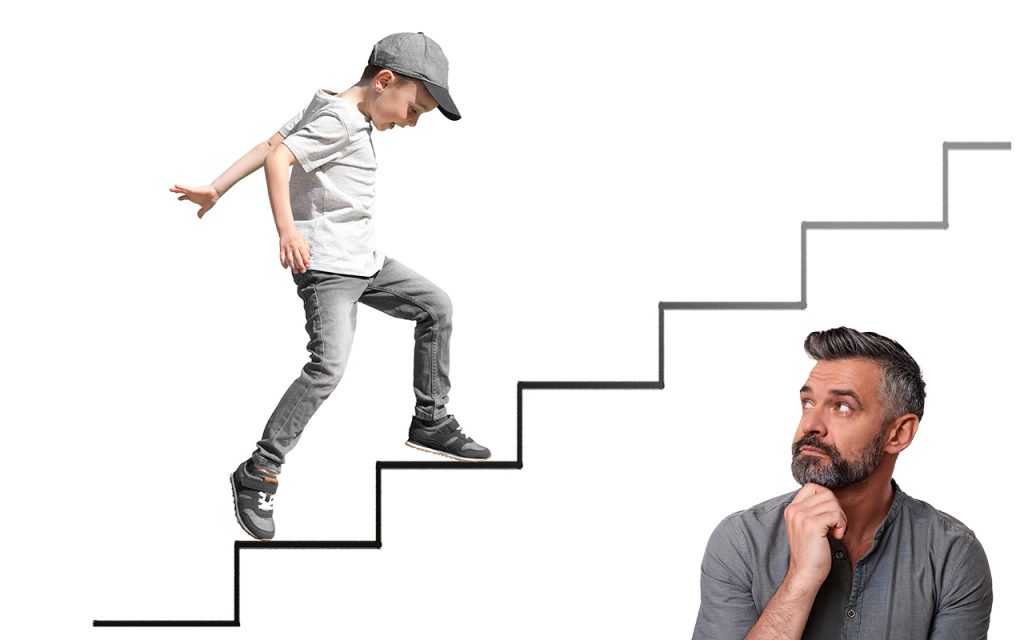By Associate Professor Luara Ferracioli
A new research paper published in the Journal of Social Philosophy advocates for greater social and legal recognition of stepparent-stepchild relationships, arguing they can hold the same significance as a child’s relationship with their biological or adoptive parents.
Social scripts tell us that stepparents are not real parents, even if they do all the things a biological parent would do. As a result, stepparents are often overlooked in both social and legal contexts, leaving them and the children they care for in vulnerable positions if the romantic relationship with the biological or adoptive parent ends.
Stepparents play a valuable role in children’s lives
Although many stepparents are active partners in creating the loving conditions for a stepchild to succeed, from providing care and support to taking on the financial costs of education and healthcare, they are seldom afforded the same social status as biological or adoptive parents.
Social norms constantly tell us that stepparent families are less conducive to children flourishing, whether that’s because of the view that the family is broken, or the widespread misconception that a stepparent-stepchild relationship can fracture the child’s relationship with their biological parents.
The stepparent is then one of the people preparing children’s breakfast in the morning, checking that they have done their homework, taking them to a playground or for a family walk, or just being there to listen and comfort them. The stepparent is also making sure their stepchildren can access whatever health care they may need, or that they are receiving the moral education necessary to function later in life.
Our stepdad is like our second dad; he’s been in our lives almost our entire life, and I consider him my dad. Both my dad and him, they’re both my dads
The stepparent then typically cares, educates, and makes sacrifices for his or her or their stepchild. And, depending on the relationship, the stepparent may also make important decisions (in conjunction with the other parents) about the receipt of medical treatment, the type of schooling, engagement with high-risk leisure activities, and so on and so forth. One child summarizes the status of her stepparent well: “Our stepdad is like our second dad; he’s been in our lives almost our entire life, and I consider him my dad. Both my dad and him, they’re both my dads”.
The stepparent-stepchild relationship is often seen as secondary to the partnership between the stepparent and biological parent. Consequently, it’s socially accepted that the bond will end if the romantic relationship dissolves. This oversight can result in significant trauma for a child. For many children, the end of a stepparent-stepchild relationship can be a significant source of pain, grief, and trauma. Psychology experts and testimonials from stepparent-stepchild families tell us that it’s not only children, but stepparents too who suffer devastation from being prevented from continuing a relationship with their stepchild.
Acknowledging the evidence that confirms stepparents play a valuable role in children’s lives is the first step to resolving the unfair and unvalidated prejudice towards stepparenting.
Moral parenthood
In Australia, legal protections for the stepparent-stepchild relationship can be ambiguous unless adoption takes place. This potentially makes it difficult for the stepparent-stepchild relationship to survive if the romantic relationship breaks up or the biological parent passes away.
When a stepparent-stepchild relationship holds moral parity with a biological relationship, it can be argued that stepparents are moral parents and should be granted the same legal rights and pathways as a biological parent when it comes to being considered for shared custody.
A moral parent understands that the parent-child relationship is valuable, and that it enriches their life significantly. Unlike someone who merely performs parental duties out of obligation to a partner, a moral parent actively participates in the child’s life, making sacrifices and taking on responsibilities to advance the child’s interests. This dedication and authority in the child’s life reflects a deep, independent bond that doesn’t waver with the end of the romantic relationship.
Is having more than two parents such a bad thing?
Reframing how we view stepparent-child relationships and accepting the concept of multiple moral parents can lead to more supportive legal frameworks for children. Society’s conception of parenthood needs to evolve to include stepparents as moral parents. Then, courts and legal frameworks will be in a better position to consider the best interests of children by maintaining their relationships with all moral parents, moving beyond outdated biases against stepparents.
It is true that even when existing parents act responsibly, children might have several stepparents in their lives, and some of the romantic relationships between existing parents and stepparents might end after the threshold that leads to moral parenthood has been crossed, leaving the child with a few additional moral parents than they would have had if the biological or adoptive parent showed more constraint in the pursuit of love.
But why bemoan this fact? If children end up with (say) five adults who care deeply about them, and are in the business of creating the conditions for their lives to go well, why should we be troubled? In the same way that an adult can have (say) five children and be a wonderful parent to all of them, children can have five parents and have a strong bond with each one of them. Once we stop seeing children as the property of their parents and start seeing them as beings with equal and independent moral status, we will be less troubled by the prospect of multiple moral parents, and children can receive the stability and care they need to thrive. We might even come to realise that multiple parents are the ideal, not the dysfunctional model it has been positioned to be.
Luara Ferracioli is an Associate Professor and political philosopher at the University of Sydney.
References: (Coleman et al. 2015, 784)


